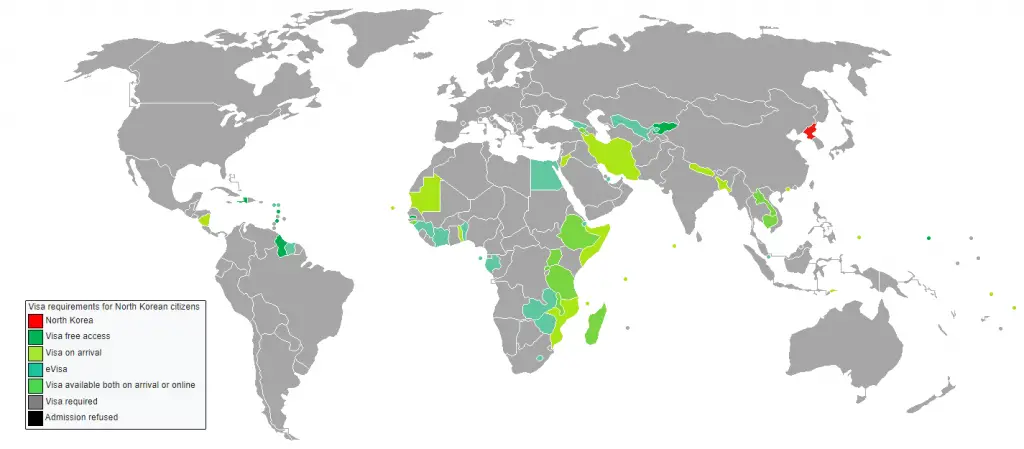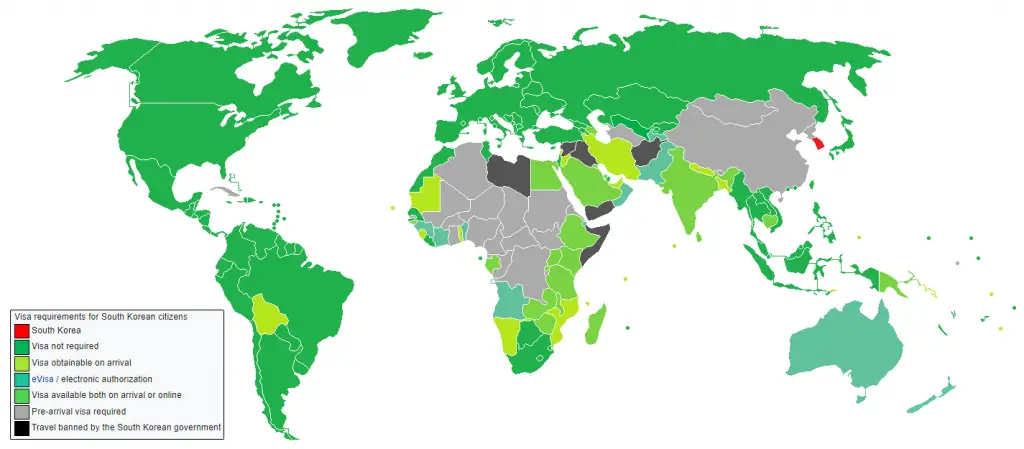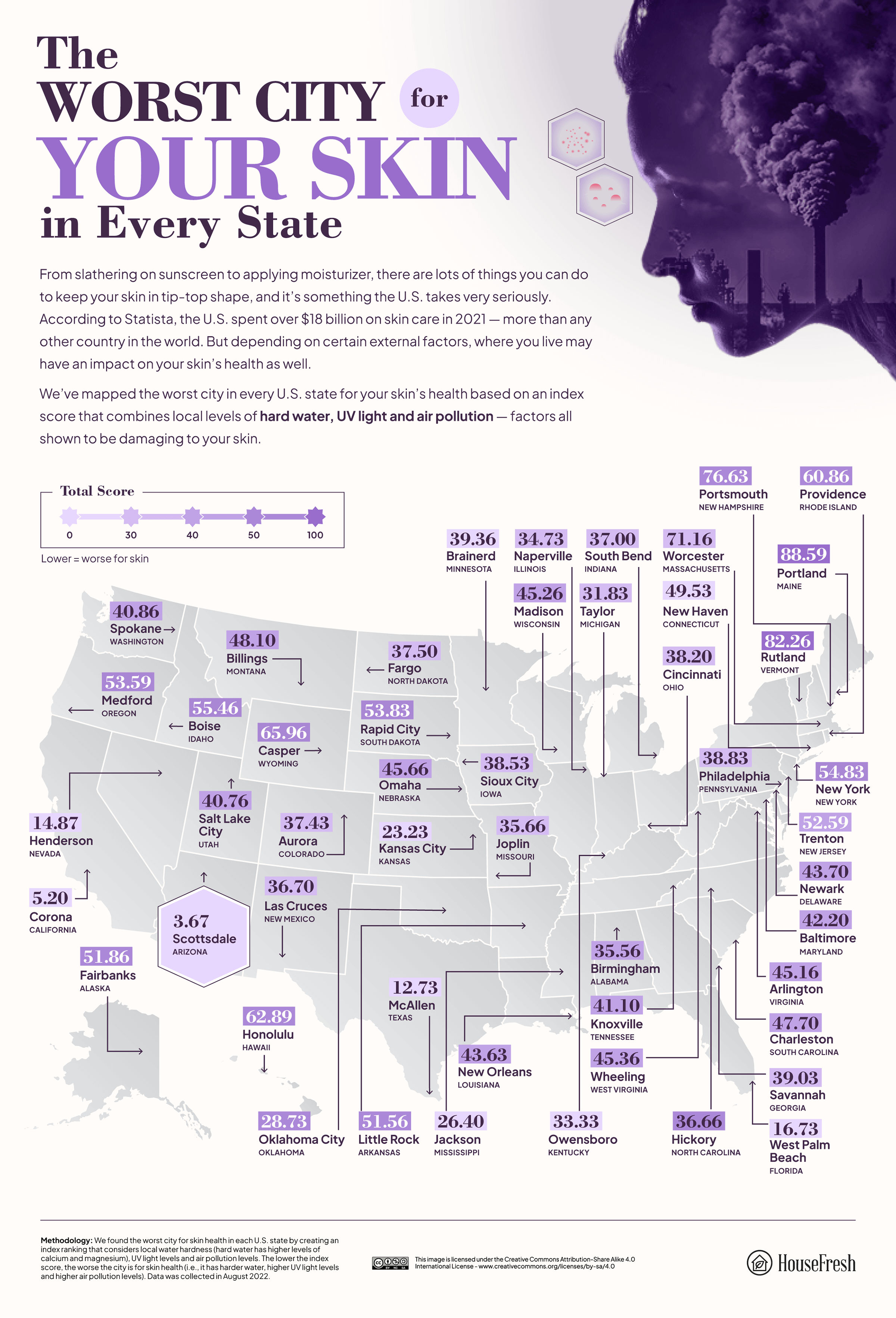North Korea vs. South Korea
The Division of Korea started at the end of WWII in 1945. The USSR controlled the North of Korea, and the U.S. held South Korea. As a result, North and South Korea have been divided for more than seventy-five years. All this time, countries have been developing in opposite directions. Now the impact of this development is visible even from space.
Table of Contents
Light Pollution
Light pollution can tell a lot about the economic development of North and South Korea.
Images below show a stark nighttime view of North Korea and its more flourishing southern next-door neighbor.


Heat map of the Korean Peninsula (1992 vs. 2008)
Satellite images show the stagnation of the North Korean economy and the rapid economic development of South Korea over the past 15 years.

Economics
South was behind North economically up until the 1970s. South had twice the population and most developed agriculture but little industry, infrastructure, energy, and resources.
In the 60s, the country was rebuilt with essential industry and urbanization taking place. In the 1970s, the South was already on par with the North. South Korea is truly an island. That’s why the country invested a lot of money into heavy industry and dockyards, becoming one of the most developed nations on the planet. Today, South Korea has a GDP per capita of $46 451.
North Korea closed country, but the accessibility of high-quality remote-sensed nighttime luminosity data opens new roads for calculating income levels.
The luminosity-based evaluation for GDP per capita in North Korea for 2018 is nearly $790.
The economy of South Korea is the fourth largest GDP in the Asian continent and the twelfth biggest in the world.

Telecommunications
In 2015 more than 3 million North Koreans had phones. Nineteen percent of homes owned a computer, but only 1 percent nationally and 5 percent in Pyongyang had access to the intranet “Kwangmyong.”
Activity from the Strava application
Strava is an application that tracks fitness using the sensors in a mobile phone and relies on a GPS location and Internet connection. Many North Koreans have smartphones, but they don’t have access to the Internet and Google Play.
The majority of tracks appear to be from foreigners.

Visa requirements
According to the Henley Passport Index 2020, the South Korea passport has almost topped the list as the globe’s most potent, allowing citizens access to 189 countries without a visa in advance, tying it with Germany.
North Koreans can visit only some third-world countries without a visa.


North and South Korea in numbers
Population
North Korea: 25.55 million
South Korea: 51.71 million
Life expectancy at birth, the total population
North Korea: 69.2 years old
South Korea: 79.3 years old
Infant mortality rate per 1 000 live births
North Korea: 26.21
South Korea: 4.08
GDP per capita
North Korea: $790
South Korea: $46 451
Press freedom index ranking
North Korea: 178th
South Korea: 50th
Internet users per 100 people
North Korea: <0.1
South Korea: 81.5
Active duty
North Korea: 1.19 million
South Korea: 0.65 million
Military expenditure as a percentage of GDP
North Korea: 22.3%
South Korea: 2.8%
Military spending
North Korea: $8.213 billion
South Korea: $25.1 billion








